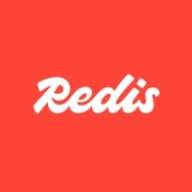

Find out in this report how the two Message Queue (MQ) Software solutions compare in terms of features, pricing, service and support, easy of deployment, and ROI.
I have looked into PubSub+ Platform's support forums to read and understand a few things that I did not understand.
Data migration and changes to application-side configurations are challenging due to the lack of automatic migration tools in a non-clustered legacy system.
I think the stability of PubSub+ Platform is pretty good, and I would rate it at eight.
Redis is fairly stable.
It was as impressive as Kafka, better than Kafka based on my experience working on the Solace and Kafka white paper.
The analytics tools integrated within PubSub+ Platform are good, as it has already integrated with cloud logging and the cloud logging features, making the analytics pretty good already.
Data persistence and recovery face issues with compatibility across major versions, making upgrades possible but downgrades not active.
Since we use an open-source version of Redis, we do not experience any setup costs or licensing expenses.
The solution's ability to decouple message producers and consumers allows us to have high cohesion and low coupling, making it an excellent solution for that purpose.
The best features of PubSub+ Platform include being highly scalable, allowing us to handle billions and billions of events.
It functions similarly to a foundational building block in a larger system, enabling native integration and high functionality in core data processes.
| Company Size | Count |
|---|---|
| Small Business | 4 |
| Midsize Enterprise | 1 |
| Large Enterprise | 14 |
| Company Size | Count |
|---|---|
| Small Business | 11 |
| Midsize Enterprise | 3 |
| Large Enterprise | 8 |
PubSub+ Platform is designed for real-time message publishing and outstanding interoperability. With features like intuitive administration and topic filtering, it offers both stability and high performance for scalable deployments across diverse scenarios.
PubSub+ Platform enhances data integration with its event mesh and seamless protocol compatibility, providing a comprehensive solution for organizations tracking shipments, generating reports, and managing transactions. Its granular topic filtering and WAN optimization ensure high utility in event-driven applications and cloud deployments. Users highlight the platform's intuitive administration and ease of management, though some seek improved integration with third-party tools and enhanced observability. Concerns include scalability for large payloads and training resource availability. Despite its interface complexity, PubSub+ remains valuable for trading and market data distribution.
What are the key features of PubSub+ Platform?PubSub+ Platform is widely implemented for asynchronous messaging in industries like finance for trading and market data, logistics for shipment tracking, and tech operations management. It enables companies to modernize applications while ensuring data accuracy and efficiency across global systems.
Redis offers high-speed, in-memory storage, renowned for real-time performance. It supports quick data retrieval and is used commonly in applications like analytics and gaming.
Renowned for real-time performance, Redis delivers high-speed in-memory storage, making it a favorite for applications needing quick data retrieval. Its diverse data structures and caching capabilities support a broad array of use cases, including analytics and gaming. Redis ensures robust scalability with master-slave replication and clustering, while its publish/subscribe pattern renders it reliable for event-driven applications. The solution integrates smoothly with existing systems, minimizing performance tuning needs. Although documentation on scalability and security could be improved, Redis remains cost-effective and stable, commonly utilized in cloud environments. Enhancing integration with cloud services like AWS and Google Cloud and refining GUI may improve usability.
What are the key features of Redis?Redis finds application across industries for tasks like caching to improve application performance and speed, minimizing database load. It enables real-time processing for session storage, push notifications, and analytics. As a messaging platform, Redis handles high traffic and supports replication and clustering for cross-platform scalability.
We monitor all Message Queue (MQ) Software reviews to prevent fraudulent reviews and keep review quality high. We do not post reviews by company employees or direct competitors. We validate each review for authenticity via cross-reference with LinkedIn, and personal follow-up with the reviewer when necessary.